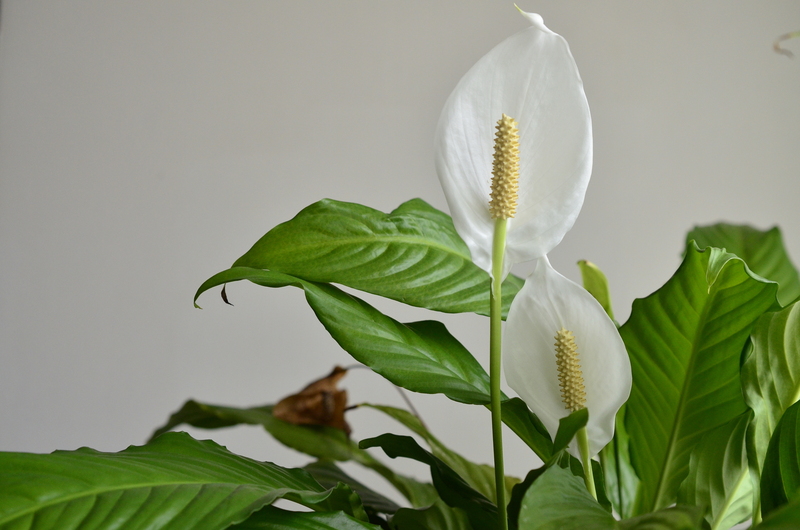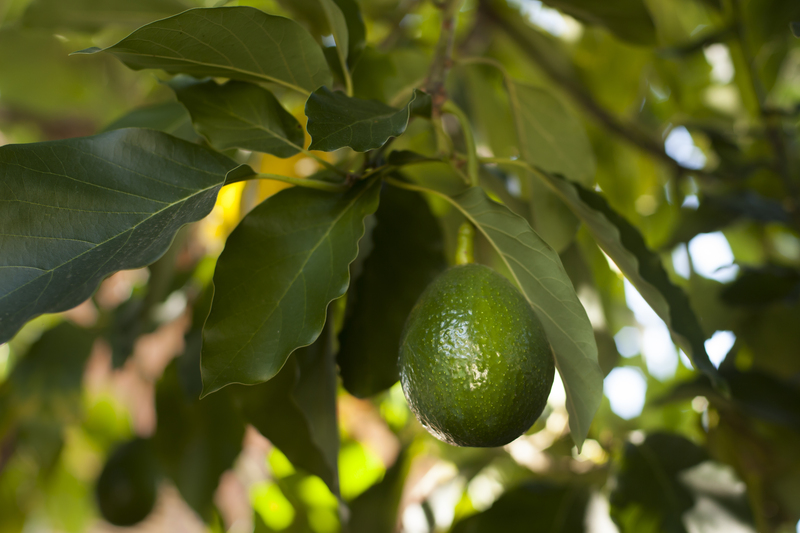Discover the Joy of Orchid Cultivation
Posted on 22/08/2025
Discover the Joy of Orchid Cultivation: A Comprehensive Guide for Every Gardener
Orchids are widely celebrated for their unique beauty, delicate fragrances, and notoriously diverse varieties. Whether you're a seasoned horticulturist or a novice plant enthusiast, you can unlock the pleasures of orchid cultivation with the right knowledge and care. In this in-depth article, learn why growing orchids is so rewarding, how to get started, and discover valuable tips and tricks for thriving plants. Let's embark on the delightful journey of nurturing these exquisite blossoms!

Why Cultivate Orchids?
Orchid growing offers an enriching blend of relaxation, artistic expression, and lifelong learning. Here are some reasons why so many fall in love with orchid plant cultivation:
- Endless Variety: With over 25,000 species and more than 100,000 hybrids, there's an orchid for every preference.
- Year-Round Beauty: Many orchids bloom multiple times a year, brightening your home or greenhouse in every season.
- Air Purification: Like many houseplants, orchids can help improve indoor air quality.
- Therapeutic Benefits: Tending to living plants is proven to reduce stress and promote mindfulness.
- Rewarding Challenge: Successfully nurturing an orchid from root to bloom provides a unique sense of accomplishment.
Understanding Orchid Cultivation: Myths vs. Reality
Many beginners believe orchids are impossible to grow. In reality, most orchid problems are caused by misinformation or improper care. Demystify orchid care by learning the basics and you'll enjoy their lush blossoms for years to come.
The Essentials of Orchid Cultivation: What You Need to Begin
Let's explore what you need to start your orchid cultivation journey.
Choosing the Right Orchid
The first step in growing orchids is selecting the appropriate orchid plant for your environment and experience level.
- Phalaenopsis (Moth Orchid): The best choice for beginners--easy to find and generous with blooms.
- Cattleya: Known for vibrant, showy blossoms; prefers bright, indirect light.
- Dendrobium: Adaptable and produces long-lasting flowers.
- Oncidium (Dancing Lady): Unique flower structure and delightful yellow hues.
- Paphiopedilum (Lady Slipper): Recognized by its pouch-shaped blooms and moderate to low light requirements.
Tip: Purchase orchids from reputable nurseries or local orchid societies for healthy, pest-free plants.
Essential Supplies for Successful Orchid Growing
- Pots or Baskets: Select containers with excellent drainage--orchids don't like wet feet!
- Potting Medium: Use a specialized orchid mix of bark, perlite, charcoal, or sphagnum moss for optimal root health.
- Watering Can: Gentle watering is key; avoid over-drenching your orchids.
- Humidity Tray: Orchids love humidity; place pots on a water-filled pebble tray.
- Fertilizer: Use a balanced orchid fertilizer for robust growth and vibrant flowers.
How to Care for Orchids: Light, Water, and More
Mastering orchid care means understanding and replicating the conditions that orchids love in nature. While environmental needs depend on the species, the following care tips apply to most cultivated orchids:
Lighting the Path to Beautiful Blooms
Light is the most crucial factor in successful orchid cultivation. Most orchids prefer filtered, indirect sunlight:
- Place orchids near east- or west-facing windows for soft morning or evening light.
- If leaves appear dark green, the plant may need more light. If yellowish or red-tinged, there may be too much sun.
- Supplement natural light with fluorescent or LED grow lights, especially during winter months.
Watering Wisdom for Happy Orchids
Overwatering is a common cause of orchid woes. Here's how to water orchids effectively:
- Water Thoroughly: Soak the potting medium until water drains from the bottom. Let the pot dry almost completely between waterings.
- Frequency Varies: Most orchids need watering every 7-10 days. Adjust frequency based on humidity, temperature, and potting medium.
- Test First: Insert your finger or a wooden skewer into the potting medium; water only if it feels dry.
- Avoid Standing Water: Never let your orchid sit in water--roots require air!
Humidity, Temperature, and Airflow: Creating the Orchid's Ideal Environment
- Humidity: Orchids thrive in 40-60% relative humidity. Use a humidity tray or humidifier as needed.
- Temperature: Most orchids prefer temperatures between 60?F-80?F (15?C-27?C). Avoid chilly drafts and sudden temperature changes.
- Airflow: Good air circulation helps prevent disease. Place a small fan nearby (not blowing directly on plants).
Feeding Your Orchids
Orchids are light feeders, but regular fertilization supports lush growth. Use a balanced, water-soluble orchid fertilizer (20-20-20) at one-quarter strength every 2-4 weeks. Always water before fertilizing to prevent root burn.
Repotting: Keeping Orchids Healthy and Vibrant
Orchids need repotting every 1-2 years to refresh their growing medium and prevent compacted, unhealthy roots. Here's a step-by-step guide:
- Remove the Orchid: Gently take the plant out of its pot and shake off old potting mix.
- Inspect Roots: Trim away mushy, brown, or dead roots with sterile scissors.
- Prepare New Pot: Fill with fresh orchid mix--never regular soil!
- Replant: Place the orchid in the new pot, spreading roots gently, and fill in around the roots with mix.
- Aftercare: Water lightly and place the plant in a sheltered spot for several days.
Repotting not only rejuvenates your orchid but also gives you an opportunity to check for pests or diseases.
Orchid Propagation: Sharing the Joy
Part of the magic of orchid cultivation is propagating new plants to expand your collection or share with friends.
Common Orchid Propagation Methods
- Division: Most common for sympodial orchids like Cattleya and Dendrobium. Separate healthy, mature pseudobulbs and pot them individually.
- Keikis: Hawaiian for "baby," keikis form on mother plants (especially Phalaenopsis and Dendrobium). Once roots develop, keikis can be carefully potted on their own.
- Backbulbs: Older, leafless pseudobulbs can sometimes be coaxed into producing new shoots and roots.
Troubleshooting: Common Orchid Problems and Solutions
Even the most attentive grower may encounter orchid issues. Here's how to fix them:
Yellowing Leaves
Possible Causes: Overwatering, old foliage naturally dying off, or inadequate light.
Solution: Assess watering habits and move the plant to brighter spot if needed. Remove only dead leaves.
Pests: Scale, Mealybugs, Aphids
- Solution: Isolate affected orchid, wipe leaves with a solution of water and mild soap, or spray with neem oil.
Root Rot
Solution: Remove all rotted roots, repot in fresh dry medium, and reduce watering frequency.
Lack of Blooming
- Check Light: Insufficient light is the most common cause.
- Rest Period: Some orchids need a brief cool, dry rest in winter to trigger flowering.

Advanced Orchid Cultivation: Unlocking Rare Varieties
Once comfortable with beginner orchids, try your hand at more challenging species such as Vanda, Miltonia, or rare miniature orchids. Each variety offers new discoveries in texture, color, and fragrance.
Join the Orchid Community
- Connect with local orchid societies for shows, plant swaps, and expert advice.
- Participate in online forums or social media groups to share progress and troubleshoot with global enthusiasts.
Conclusion: Experience the Joy of Growing Orchids
Discovering the joy of orchid cultivation is an invitation to beauty, patience, and wonder. Each new shoot or bud is a testament to your care, knowledge, and devotion. Whether brightening a windowsill or tending a verdant greenhouse, growing orchids connects you to centuries of horticultural tradition and provides a lifelong source of enjoyment.
Now that you're equipped with essential tips for orchid gardening, why not start your own collection? Embrace the journey, celebrate every bloom, and share the magic of orchids with the world!
Enjoyed learning about orchid cultivation? Share this article and inspire others to join the rewarding world of orchid growing!

